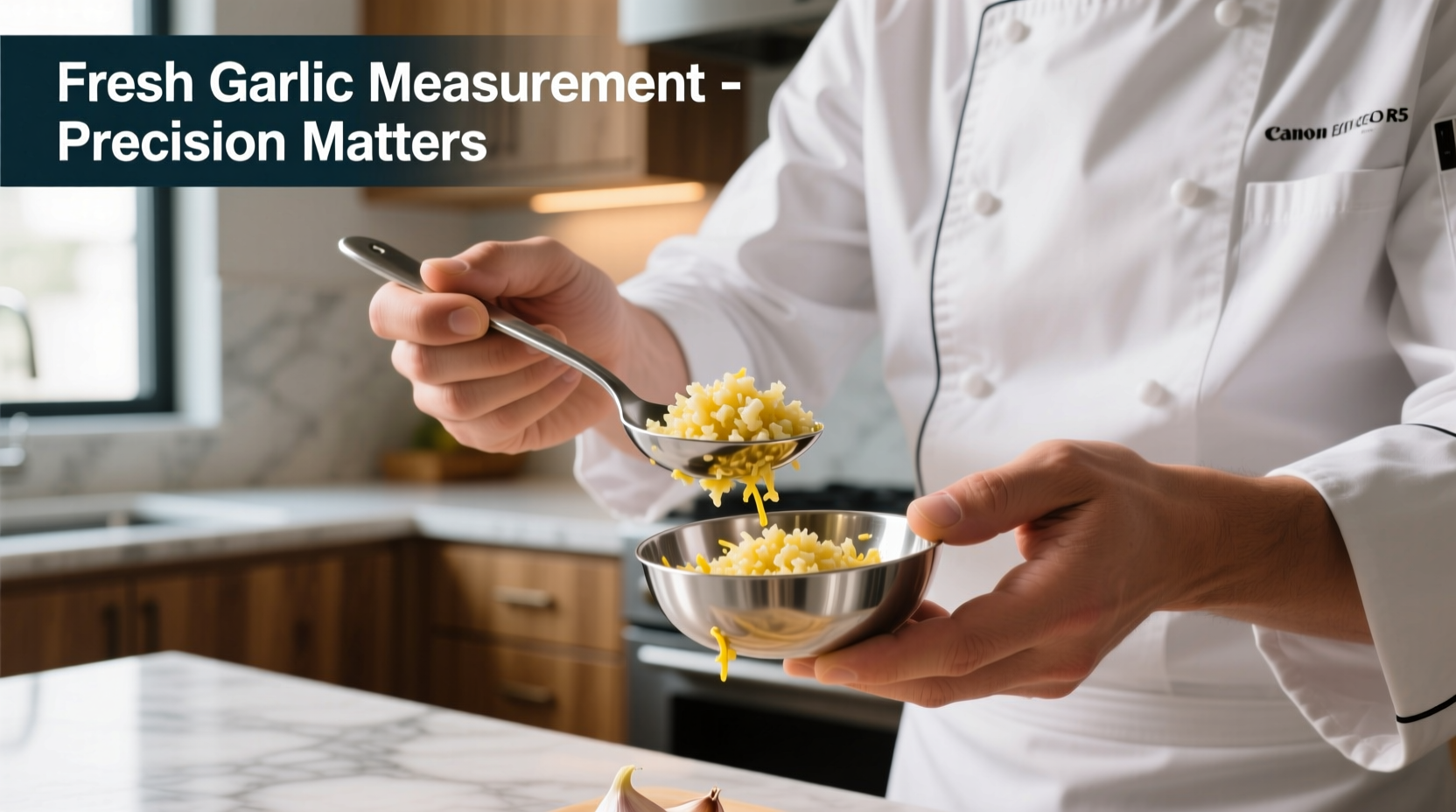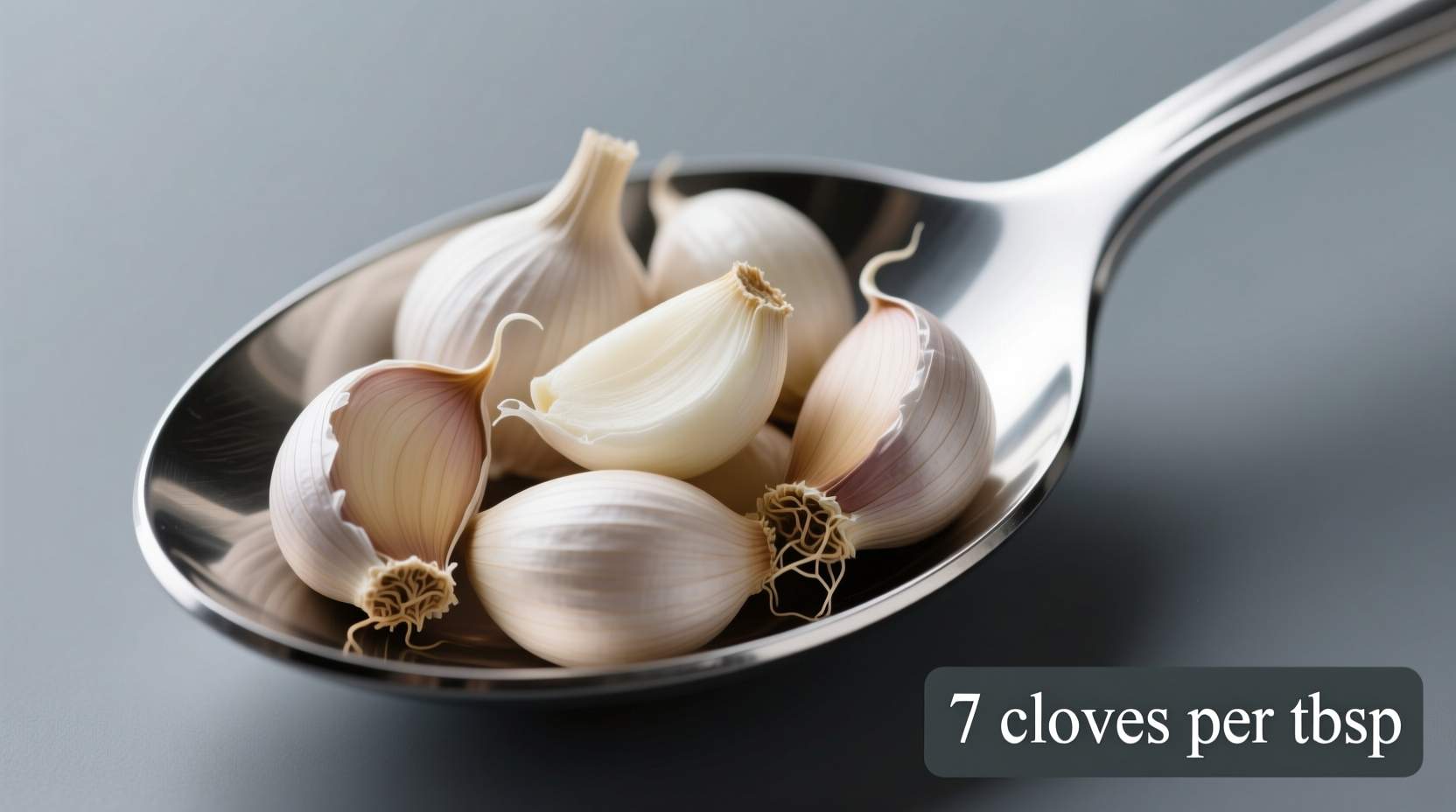Why Garlic Measurement Matters in Cooking
Getting garlic measurements right separates good cooking from great cooking. Unlike standardized ingredients, garlic cloves vary dramatically in size - from petite single-clove varieties to jumbo supermarket bulbs. When recipes specify “1 tablespoon minced garlic” rather than “3 cloves,” they're accounting for this inconsistency. Professional kitchens rely on volume measurements because they deliver consistent results regardless of garlic variety or seasonal availability.
Garlic Clove to Tablespoon Conversion Guide
The exact number of cloves per tablespoon depends on both size and preparation method. Here's the breakdown chefs use daily:
| Garlic Size | Minced (teaspoons) | Chopped (teaspoons) | Cloves per Tablespoon |
|---|---|---|---|
| Small (0.5" diameter) | 1/4 tsp | 1/3 tsp | 12 |
| Medium (0.75" diameter) | 1/2 tsp | 2/3 tsp | 6 |
| Large (1"+ diameter) | 3/4 tsp | 1 tsp | 4 |
This conversion data aligns with the USDA FoodData Central measurements for fresh garlic, which confirms that 3g of minced garlic equals approximately 1/2 teaspoon. Professional chefs at the Culinary Institute of America teach that volume measurements prevent the common mistake of using oversized cloves that can dominate a dish.
Measuring Garlic Without Counting Cloves
When you're mid-recipe and realize your garlic head has unusually large or small cloves, follow these chef-tested techniques:
- The Water Displacement Method: Fill a tablespoon measure halfway with water, then add minced garlic until water reaches the top
- Visual Reference System: A properly minced tablespoon of garlic should cover three standard bottle caps placed side by side
- Texture Check: Properly minced garlic for 1 tablespoon should form a compact mound that holds its shape briefly when scooped

When Garlic Measurements Go Wrong
Many home cooks accidentally double their garlic when converting cloves to tablespoons. This happens because:
- Using chopped instead of minced garlic (chopped yields 30% more volume)
- Not accounting for air pockets in loosely packed measurements
- Using elephant garlic, which has milder flavor requiring more volume
According to research published in the Journal of Food Chemistry, raw garlic’s allicin content—responsible for both flavor and health benefits—varies by 400% between varieties. This explains why some cloves taste dramatically stronger than others despite identical measurements.
Pro Tips for Perfect Garlic Every Time
Professional kitchens maintain garlic consistency through these techniques:
- Standardize your mince: Use a consistent knife technique where pieces are no larger than 1/16 inch
- Season immediately: Salt your minced garlic and let it rest 5 minutes before adding to dishes for more even flavor distribution
- Adjust for cooking method: Use 25% less garlic for roasted dishes since heat concentrates flavor
- Preserve potency: Never microwave garlic for quick mincing—this destroys delicate flavor compounds
Special Considerations for Different Garlic Types
Not all garlic converts the same way. These regional varieties require special attention:
- Elephant garlic: Use 50% more volume as it contains less allicin
- Black garlic: 1 tablespoon equals 2 regular tablespoons of fresh due to concentrated flavor
- Garlic paste: 1/2 teaspoon paste = 1 medium clove (check label as concentrations vary)
Food scientists at UC Davis note that garlic’s pungency peaks 10 minutes after cutting, then gradually diminishes. This explains why chefs time their garlic preparation to coincide with when it’ll hit the heat.











 浙公网安备
33010002000092号
浙公网安备
33010002000092号 浙B2-20120091-4
浙B2-20120091-4